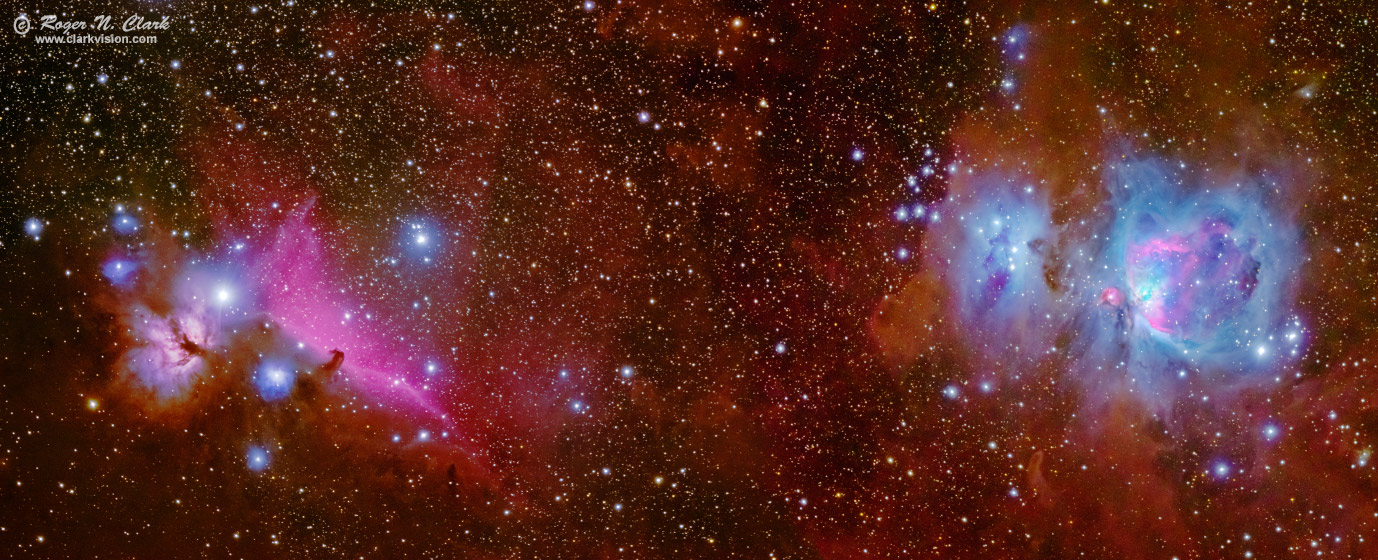| Home | Galleries | Articles | Reviews | Best Gear | New | About | Contact | Gallery Index | Previous |
Next |

| Home | Galleries | Articles | Reviews | Best Gear | New | About | Contact | Gallery Index | Previous |
Next |

By the eastern star in the belt of Orion is the beautiful Horsehead nebula (left in the image), and in Orion's sword is the Great Orion Nebula, Messier 42 (right in the image).
Technical. This image is a mosaic of two frames obtained with a Canon 7D Mark II 20-megapixel digital camera and 300 mm f/2.8 L IS II lens at f/2.8 and ISO 1600. No dark frame subtraction, no flat fields. Tracking with an Astrotrac and no guiding. The left side had 70 minutes of exposure and the right side 27.5 minutes (plus shorter exposure for the core of M42 in a high dynamic range image). These images record unprecedented faint detail for a DSLR and such short exposures, illustrating the amazing low light capability of the 7D Mark II camera.
The Exposure Factors, CEF, CEFA are measures of the relative amounts of light received from a subject. It can be used to fairly compare wildly different lens/telescope apertures and exposure times. For this image:
Modern DSLRs like the 7D Mark II include on sensor dark current suppression and low fixed pattern noise at ISOs around 1600 and higher, making no need for dark frame subtraction. Modern raw converters correct for light fall-off and also correct for hot/dead/stuck pixels. This makes processing low light images easy: simply align and average.
The color balance is true color, meaning this is a stock camera with very close spectral response similar to the human eye. Astrophotographers often modify cameras for increased sensitivity to Hydrogen-alpha emission (red). Hydrogen emission nebulae actually appear pink due to H-alpha (red), H-beta (blue) and emission from other atoms, like oxygen and sulfur. Modified cameras over emphasize H-alpha, making hydrogen emission nebulae come out red in photos. The orange in the image is the color from dust. Unmodified cameras do a better job at color separation of the various processes that occur in the deep sky. Modified cameras tend to show mostly red in areas like that in this image, making it too difficult to tell the difference between dust and hydrogen emission nebulae.
To learn how to obtain stunning images like this, please visit my Extensive Articles on Photography .
See my review of the Canon 7D Mark II and why it is so good for astrophotography: Canon 7D Mark II sensor analysis.
Keywords to this image = astrophoto-1 nebula Messier low-light digital_astro mosaic panoramic canon_7d2
Image ID: horsehead+m42_300mm_c11.21.2014.0J6A1631-1750-SigAv.h-pan1-b5x5s.jpg
| Home | Galleries | Articles | Reviews | Best Gear | Science | New | About | Contact |
Last updated November 03, 2025